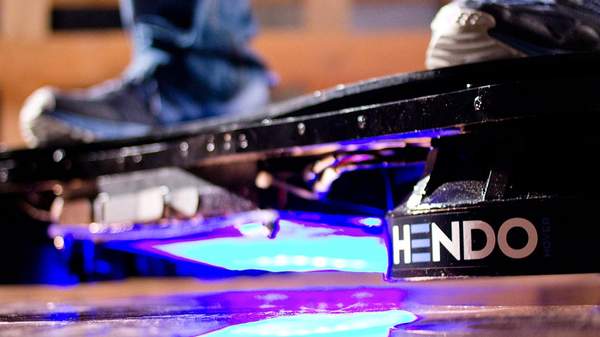Overview
Earlier this year Christopher Lloyd and Moby broke our hearts. Knowing full well that everyone in the world was pining for a functioning hoverboard by 2015 — the year that Marty McFly travelled to in Back to the Future II — they toyed with our emotions to make a viral hit for Funny or Die. But now, we might just have the real thing. Journalists have talked to the creators, they've ridden it, they've got videos to prove it. This is not a hoax.
In the past 24 hours the internet has exploded with news of the Hendo Hoverboard. Currently funding on Kickstarter, this working prototype may not exactly look like the bright pink contraption Michael J. Fox rode in the film, but it is an incredible step in the right direction. Though still in development, this certified hoverboard can carry the weight of a person while levitating one inch off the ground. It does this with the help of magnets.
As the board requires a magnetic field in order to function, it needs to be used over a metallic surface. The current design has been trialled on a specifically-designed copper skate ramp — an idea which the creators plan to build upon in the future with a full 'hoverpark'. Before you ask, no, it can't fly on water.
To continue developing the product, the engineers at Hendo tech need to raise $250,000 from their Kickstarter campaign. The rewards for those who pledge include a small piece of levitating technology called 'The White Box', an extended ride on the real-life board, or for $10,000, your very own hoverboard. Though they are only expected to produce 10 hoverboards for this first Kickstarter run, they'll knowingly be releasing them around October 21, 2015.
They should have no trouble funding the project; the campaign has only been online for 24 hours and has already reached half of its goal. But many critics are understandably jaded. Both Gizmodo and The New York Times are expressing serious dissatisfaction with the project, claiming the technology we're seeing is disappointingly far from its filmic inspiration.
Yes, the board needs to be used over a metal surface. Yes, it has a terrible battery life and makes a truly awful amount of noise. But this is the nature of invention, right? Any step closer to this, can hardly be a bad thing.
Check out the Kickstarter campaign for more information about the project.
